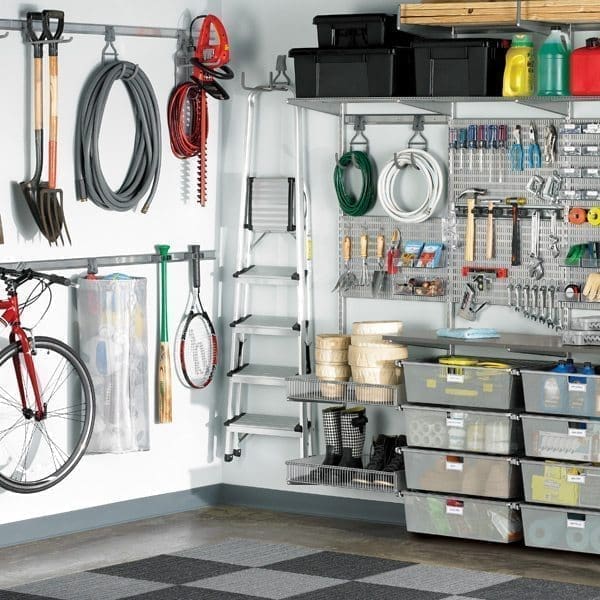Declutter Before a Move: How to Simplify Your Transition to a New Home
Why Should You Declutter Before a Move?
Decluttering before moving is a transformative endeavor that can save time, money, and stress. By reducing the number of items you need to pack, you significantly lessen the physical and emotional burden of moving.
Fewer boxes mean lower moving costs and a quicker transition. Moreover, moving into a new space with only the essentials can create a sense of freshness and simplicity, allowing you to start anew without the weight of unnecessary possessions.
Decluttering before a move also allows you to reflect on your belongings, keeping only those that add value to your life and letting go of the rest.

The Importance of Creating a Decluttering Plan Before a Move
Creating a decluttering plan is crucial for an organized and efficient move. This plan serves as a roadmap, guiding you through each stage of the decluttering process. It helps to break down the overwhelming task into manageable steps, ensuring you stay focused and motivated.
A well-structured plan includes a timeline, specific goals, and a checklist of tasks to be completed.
Following a declutter checklist for moving, you can systematically tackle each room, making the process more streamlined and less daunting. It also ensures that nothing is overlooked and every item is accounted for.
Step 1: Assessing Your Belongings Before Moving
Begin the decluttering for a move process by thoroughly assessing your belongings. Take an inventory of everything you own, from furniture to knickknacks. This step allows you to understand the volume of items you have and identify what is truly necessary.
As you assess, ask yourself questions like: “Do I use this item regularly?” “Does it hold sentimental value?” “Is it worth the space it occupies?”
This reflective process helps to differentiate between essential items and those that are superfluous.
Step 2: Sorting and Categorizing Items
Once you’ve assessed your belongings, the next step in decluttering to move is sorting and categorizing them. Create piles or use bins labeled “Keep,” “Donate,” “Sell,” and “Trash.”
This methodical approach helps to organize items based on their future purpose.
Sorting is a critical step that simplifies the decluttering process by providing clear direction on where each item will go. It also makes it easier to see the volume of items in each category, which can be motivating as you see the “Keep” pile shrink.
Step 3: Purging and Letting Go of Unnecessary Items Before Packing For a move
Purging is perhaps the most challenging yet liberating step in decluttering before a move. It involves making decisive choices about what to let go of.
Purging is perhaps the most challenging yet liberating step in decluttering before a move.
Embrace the philosophy of minimalism by keeping only what you need or love. Donate items that are in good condition but no longer serve you. Sell valuable items to recoup some costs. Dispose of broken or unusable items responsibly.
Remember, purging is not about getting rid of everything but creating space for what truly matters.
Step 4: Organizing Your Remaining Belongings
After removing unnecessary items, organize what remains. Arrange your belongings to maximize space and accessibility.
Use storage solutions like bins, shelves, and dividers to keep things tidy. Label boxes clearly to indicate their contents and the room they belong in.
An organized approach not only makes packing easier but also simplifies unpacking in your new home. It ensures that you can quickly find what you need without sifting through countless boxes.
Step 5: Selling, Donating, or Disposing of Unwanted Items
Now that you have categorized your items, it’s time to take action on the unwanted ones.
Sell valuable items through online marketplaces, garage sales, or consignment shops. Donating items to local charities or shelters can give them a new lease on life and benefit those in need.
For items that cannot be sold or donated, dispose of them responsibly, ensuring you follow local regulations for recycling and waste disposal. This step clears the way for a clutter-free move and helps others in the process.
Step 6: Packing and Labeling Boxes For a Move
Packing is the final step in the decluttering for moving process.
As someone who moved countless times as a Navy spouse and as a professional organizer, I recommend gathering high-quality packing materials, such as sturdy boxes, bubble wrap, packing tape, and markers. Follow these tips for efficient packing and labeling:
- Pack Room by Room: Tackle one room at a time to stay organized. Start with non-essential items and leave everyday necessities for last.
- Label Boxes Clearly: I can’t emphasize it enough: use a clear labeling system. Write the contents and the destination room on each box. For added efficiency, consider color-coding boxes by room. Clearly label each box with its contents and the room it belongs to.
- Be Smart When Labeling: Remember to label each corner since we can’t read what is written on the top when we pile them. I like to apply tape horizontally to the top corners and write the destination.
- Use Packing Paper and Bubble Wrap: Wrap fragile items individually in packing paper or bubble wrap. Fill any empty spaces in boxes with packing peanuts or crumpled paper to prevent shifting during transit.
- Create an Inventory List: Keep a detailed list of what’s inside each box. This will make unpacking much easier and help you keep track of your belongings.
- Box Weight Management: Avoid overloading boxes. Keep the weight manageable to prevent injuries and box breakage. Place heavier items in smaller boxes and lighter items in larger ones.
Proper packing ensures your belongings are protected during the move and simplifies unpacking.
Remember to label each corner since we can’t read what is written on the top when we pile them. Apply tape horizontally to the top corners and write the destination.
Decluttering Tips for a Smooth Moving Process
- Start Early: Begin the decluttering process as soon as you know you’re moving. This gives you ample time to sort through your belongings without feeling rushed or becoming burned out.
- Set Small Goals: Break the task into smaller, manageable goals, such as decluttering one room or category at a time. Have too many books or china? This is the perfect time to keep what you love.
- Stay Motivated: Keep the end goal in mind—a clutter-free new home. Reward yourself for completing each step.
- Involve the Family: Make decluttering a family activity. It will lighten the workload and teach valuable lessons about organization and letting go.
- Seek Help if Needed: If the task feels overwhelming, consider hiring a professional organizer or enlisting the help of friends.
Decluttering for a move is a meticulous but rewarding process. By following these steps and incorporating these decluttering tips for moving, you can ensure a smoother, more efficient move, setting the stage for a fresh start in your new home.




